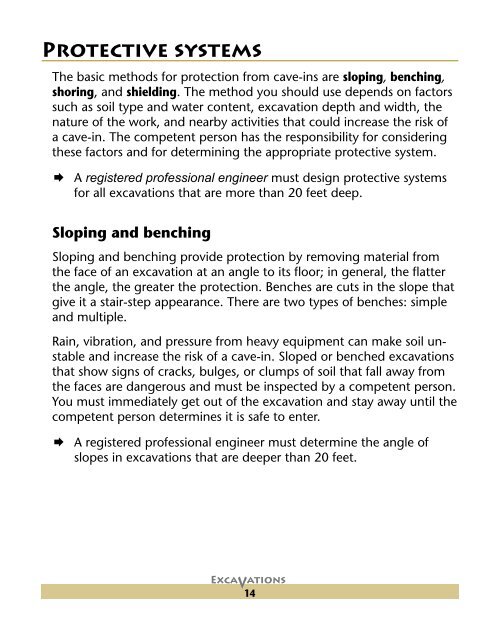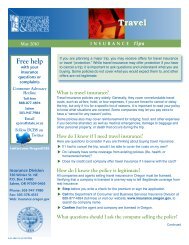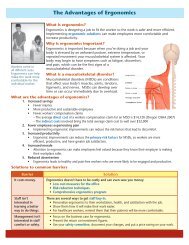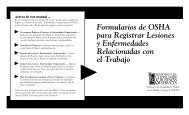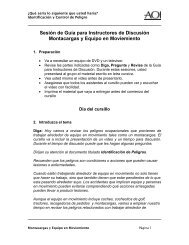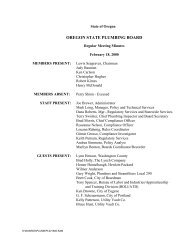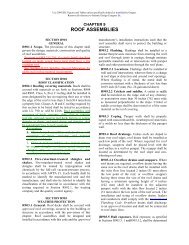ExcAVATIONs
ExcAVATIONs
ExcAVATIONs
Create successful ePaper yourself
Turn your PDF publications into a flip-book with our unique Google optimized e-Paper software.
Protective systems<br />
The basic methods for protection from cave-ins are sloping, benching,<br />
shoring, and shielding. The method you should use depends on factors<br />
such as soil type and water content, excavation depth and width, the<br />
nature of the work, and nearby activities that could increase the risk of<br />
a cave-in. The competent person has the responsibility for considering<br />
these factors and for determining the appropriate protective system.<br />
A registered professional engineer must design protective systems<br />
for all excavations that are more than 20 feet deep.<br />
Sloping and benching<br />
Sloping and benching provide protection by removing material from<br />
the face of an excavation at an angle to its floor; in general, the flatter<br />
the angle, the greater the protection. Benches are cuts in the slope that<br />
give it a stair-step appearance. There are two types of benches: simple<br />
and multiple.<br />
Rain, vibration, and pressure from heavy equipment can make soil unstable<br />
and increase the risk of a cave-in. Sloped or benched excavations<br />
that show signs of cracks, bulges, or clumps of soil that fall away from<br />
the faces are dangerous and must be inspected by a competent person.<br />
You must immediately get out of the excavation and stay away until the<br />
competent person determines it is safe to enter.<br />
A registered professional engineer must determine the angle of<br />
slopes in excavations that are deeper than 20 feet.<br />
14


